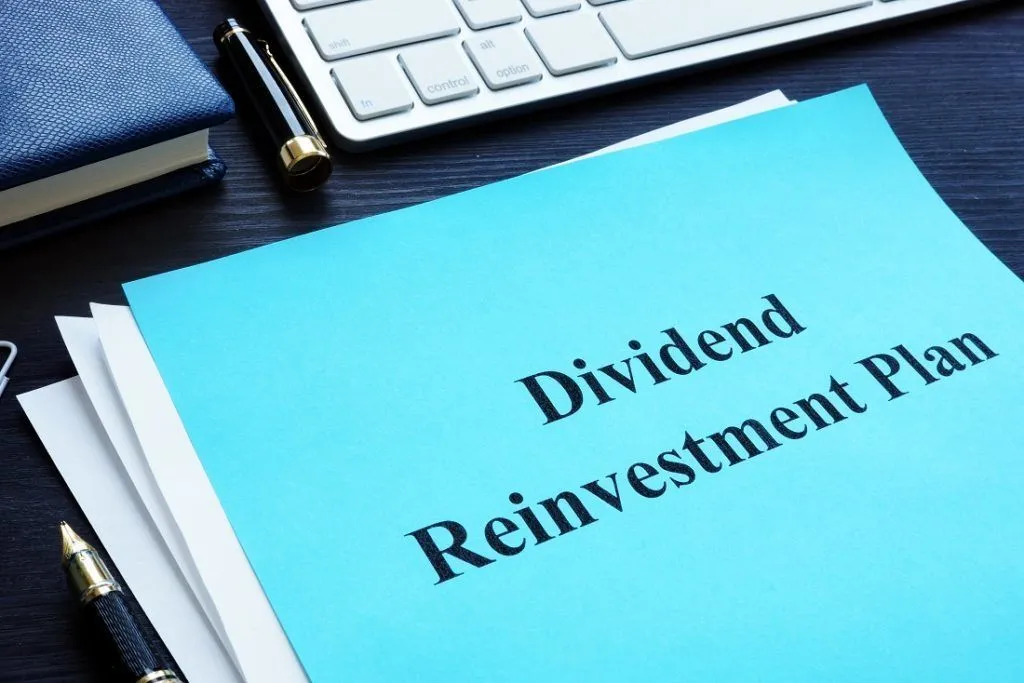Discover the power of DRIP dividends and learn how this investment strategy can help you grow your wealth over time. Explore the benefits, implementation, and answers to frequently asked questions about DRIP dividends.
Contents
Introduction: Embracing the Power of DRIP Dividends
Investing in the stock market has long been regarded as a lucrative way to build wealth. Among the various investment strategies available, Dividend Reinvestment Plans (DRIPs) have gained popularity for their potential to generate substantial returns over time. In this article, we will delve into the world of DRIP dividends and explore how this unique approach can help you maximize your investment gains. Whether you are new to investing or a seasoned investor, understanding the benefits and implementation of DRIP dividends can be a valuable addition to your financial knowledge.
DRIP Dividends: An Overview
Dividend Reinvestment Plans, commonly known as DRIPs, are investment programs offered by companies that allow shareholders to reinvest their cash dividends back into purchasing additional shares of the company’s stock. With DRIP dividends, investors can automatically and continuously reinvest their earnings, facilitating the compounding effect and potentially increasing the overall value of their investment portfolio over time.
Canadian companies that are traded on the Toronto Stock Exchange (TSX), can decide to use the money they earn as profits to pay their shareholders. This payment is called a Dividend. Obviously, not all companies make money, and as such not all companies pay dividends. Likewise, just because a company is profitable doesn’t mean it will pay a dividend.
Let us pretend you own 100 shares of XYZ Company and a dividend is declared of $0.25 per share, so you would be paid $25.00. Dividends are normally paid quarterly, so you get $25 every 3 month unless the company raises, lowers or stops their dividend payments.
Now what to do with that cash?! Well, some Canadian companies offer to its shareholders the option of reinvesting that dividend payment by buying more shares in the company. Instead of receiving a cheque, you would receive more stock in that company. This is called a DRIP.
A slight difference is with Income Trusts (Royalty Trusts, Real Estate Income Trusts, etc…) is that they pay what’s called a Distribution and is most often monthly. Distribution Reinvestment Plans exist just the same as regular DRIPs and the term is used interchangeably.
DRIPs are very beneficial to shareholders since they offer many great features. The biggest being Fractional Share Purchases of your dividend payment.
Benefits of DRIP Dividends
Investing in DRIP dividends can provide several advantages for investors seeking long-term growth and wealth accumulation. Some key benefits include:
- Compounding Growth: By reinvesting dividends, investors can harness the power of compounding, where the returns generated from the reinvested dividends can also generate additional returns, thus accelerating the growth of their investment.
- Dollar-Cost Averaging: DRIP dividends often involve regular investments, allowing investors to buy more shares when prices are lower and fewer shares when prices are higher. This approach helps smooth out market fluctuations and reduce the impact of short-term price volatility.
- Automatic and Convenient: DRIP dividends provide a hands-off approach to investing. Once enrolled, investors can sit back and let the process take care of itself, eliminating the need for constant monitoring and decision-making.
- Potential Tax Advantages: Depending on your jurisdiction, DRIP dividends may offer tax advantages. Reinvested dividends are often taxed at a lower rate compared to cash dividends, allowing investors to potentially reduce their tax liabilities.
Implementing DRIP Dividends
Getting started with DRIP dividends is a straightforward process. Follow these general steps to implement this investment strategy:
- Select DRIP-Eligible Stocks: Identify companies that offer DRIP programs. Many large, established companies provide this option to their shareholders, but it is important to research each company’s specific DRIP terms and conditions.
- Open a Brokerage Account: If you don’t already have a brokerage account, open one with a reputable brokerage firm that supports DRIP investing. Ensure that the brokerage you choose offers access to the stocks you are interested in.
- Enroll in DRIP Programs: Once you have selected your desired stocks, enroll in their respective DRIP programs through your brokerage account. This process may require completing additional forms or providing specific instructions to the brokerage.
- Monitor and Track: After enrolling in DRIP programs, keep track of your investments and monitor their performance. Regularly review your portfolio and make any necessary adjustments to align with your investment goals.
TOP 5 Hand Picked DRIP Dividends in 2023
Let me give you 5 top hand picked dividends with the DRIP strategy. Drip, short for dividend reinvestment plan, is a strategy that involves using monthly dividend stocks to buy back shares, thereby enhancing the Compound Effect.
Implementing drip strategies can be costly for some Canadian stocks, such as ATD Elementation Cush Card, which trades at approximately $66 per share. To drip this stock quarterly, you would require $66 in dividends, equivalent to 488 shares, totaling a significant amount of $31,000.
However, there is a more cost-effective approach. Take Enbridge, for example, currently trading at $52 per share. With quarterly dividends of $52, you would only need 59 shares, costing you $3,091. The real game-changer lies in utilizing the compounding power on a monthly basis, as opposed to quarterly. By employing monthly drip and purchasing stocks solely from your dividends, you can expedite your dividend journey significantly. This strategy is particularly beneficial for investors who regularly invest their money on a monthly basis. Instead of dipping into your own pockets, imagine using your monthly dividend income to repurchase shares.
Now, let’s delve into five of my top favorite monthly paying dividend stocks. To showcase the compounding power of a monthly income, I have prepared an Excel sheet calculator, where all the calculations are condensed. First on the list is DFN, trading at $7.82 per share, with a yearly dividend of $1.20 and a monthly dividend of $0.10. Calculating the required dividends, we find that you need approximately $93 to repurchase one share of DFN each month. With this information, the calculator determines that you would need 78 shares, totaling $611. Investing in DFN through drip would not break the bank, as it is within a reasonable range.
| STOCK | Price per dividend (insert) | Div, per share year (insert) | Yield | Shares | Total monthly div | Total dividends needed DRIP | Shares needed for DRIP | Total investment for shares | Monthly Dividends Payout |
| DFN | $7.82 | $1.20 | 15.35% | 1 | $0.10 | $93.84 | 78.20 | $611.52 | $7.82 |
| PZA | $14.16 | $0.84 | 5.93% | 1 | $0.07 | $169.92 | 202.29 | $2,864.37 | $14.16 |
| DIV | $3.23 | $0.24 | 7.43% | 1 | $0.02 | $38.76 | 161.50 | $521.65 | $3.23 |
| SRU | $27.27 | $1.85 | 6.78% | 1 | $0.15 | $327.24 | 176.89 | $4,823.69 | $27.27 |
| RNW | $12.06 | $0.94 | 7.79% | 1 | $0.08 | $144.72 | 153.96 | $1,856.73 | $12.06 |
Suppose you prefer growth stocks or actual companies rather than split share stocks. In that case, Pizza Pizza Stock is an excellent choice. With a trading price of $14.16 and a yearly dividend of $0.84 (monthly dividend of $0.07), the calculator reveals that you need 200 shares, amounting to approximately $2,800. Investing $3,000 in a stock that generates $14 per month in income is a reasonable investment, especially considering the income potential.
Moving on, we have Diversified Royalty Corp (dividend of $0.24 per year and a monthly dividend of $0.02). The calculator shows that you need $38 in dividends to buy back this stock, resulting in 161 shares and a cost of $521. This represents an affordable option for investors, demonstrating the power of monthly dividends.
Another noteworthy stock is SRU Smart Centers Royalty Corp. As one of my largest holdings and a growth stock, SRU offers potential for both dividends and growth. With a share price of $27, a dividend per year of $1.85, and a monthly dividend of $0.15, you would need $327 in dividends. The calculator calculates that you require 176 shares, amounting to around $4,800 or $5,000. Although this may be relatively expensive for some individuals, the combination of dividends, growth, and monthly drip make SRU an attractive choice.
Lastly, we have RNW, a renewable utility stock. While it carries some risk due to the nature of the industry, it can be a viable long-term investment. With a share price of $12, a dividend per year of $0.94, and a monthly dividend of $0.08, the required dividends amount to $144. The calculator indicates that you would need 153 shares, costing approximately $1,800 or $2,000. If you are comfortable with a long-term investment and a great dividend, RNW is worth considering.
In summary, by combining these five stocks with a solid ETF like VFV or XIC, you can create a well-rounded portfolio that benefits from automatic drip and the growth potential of the S&P 500. By investing a total of $11,000, you can enjoy the convenience of a portfolio with continuous automatic drip. However, it is important to note that not all stocks are suitable for quarterly dripping. Stocks like Enbridge and Bank of Nova Scotia, which offer higher dividend percentages (4% to 7%), are more appropriate for this approach.
In conclusion, the monthly drip calculator provided here showcases the power of monthly dividend stocks. By utilizing this calculator, investors can easily determine the number of shares required and the associated costs for monthly drip investments. If you are interested in obtaining this calculator, please leave a comment, and I will share it on one of my Instagram pages. With this tool, you can streamline your investment strategy and unlock the potential of monthly dividends.
FAQs About DRIP Dividends
Q1: What types of companies typically offer DRIP programs? DRIP programs are commonly offered by well-established, dividend-paying companies with a long history of stability and consistent dividend payouts. These companies often belong to sectors such as utilities, consumer goods, telecommunications, and financial services.
Q2: Can I enroll in DRIP programs if I own shares through a retirement account? Yes, in most cases, you can participate in DRIP programs even if you hold shares through a retirement account. However, it is essential to check with your brokerage or custodian to ensure compatibility with your specific retirement account type.
Q3: Are DRIP dividends reinvested at the market price? Yes, DRIP dividends are typically reinvested at the market price prevailing on the dividend payment date. This ensures that investors receive the current market value for their reinvested dividends.
Q4: Can I sell my DRIP shares at any time? Yes, DRIP shares can be sold at any time, just like regular shares. However, it’s important to consider the potential tax implications and transaction costs associated with selling shares.
Q5: Can DRIP dividends be used for purchasing fractional shares? Yes, many DRIP programs allow investors to purchase fractional shares. This means that even if the dividend payment is not sufficient to buy a whole share, it can still be reinvested in fractions of shares.
Q6: Do all brokerage firms support DRIP investing? Not all brokerage firms offer DRIP investing. Before opening an account, ensure that the brokerage you choose provides access to DRIP programs and supports the stocks you are interested in.
Conclusion: Leveraging the Potential of DRIP Dividends
DRIP dividends present an attractive investment strategy for individuals seeking long-term growth and wealth accumulation. By harnessing the power of compounding and taking advantage of the various benefits they offer, investors can potentially enhance their returns over time. The convenience of automatic reinvestment and the potential tax advantages further make DRIP dividends a compelling option. Remember to thoroughly research companies offering DRIP programs, choose a reliable brokerage, and monitor your investments to align with your financial goals. Embrace the power of DRIP dividends and set yourself on the path to building a stronger financial future.





I wanted to express how wonderful your post is. I could tell you are an authority on this subject because of how obvious it is. If everything is up to you, I would want to follow your feed so I can be informed when you publish new content. Many thanks, and keep up the fantastic work.